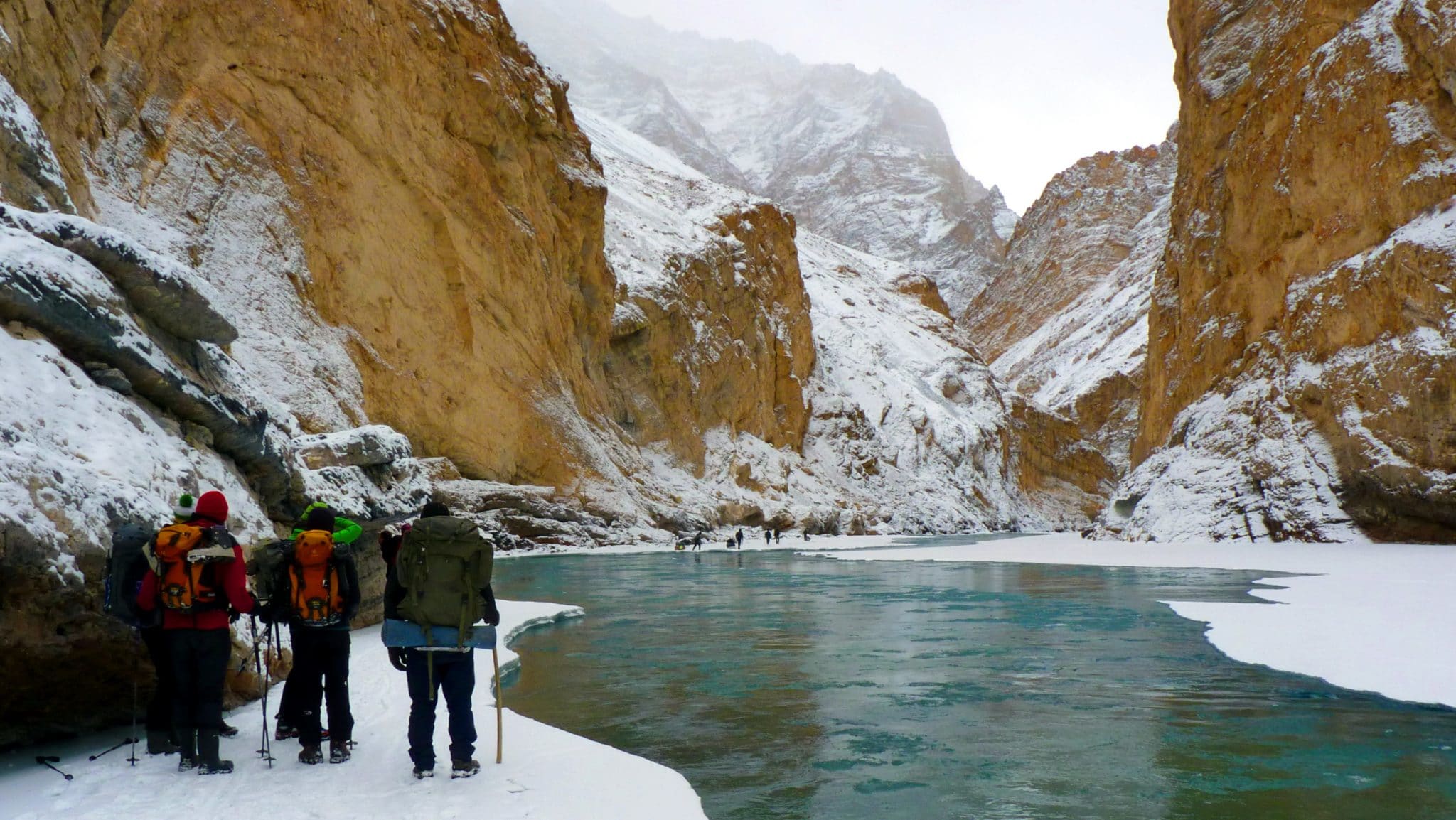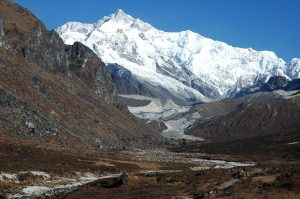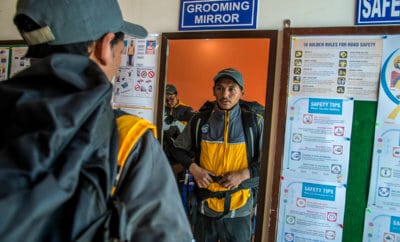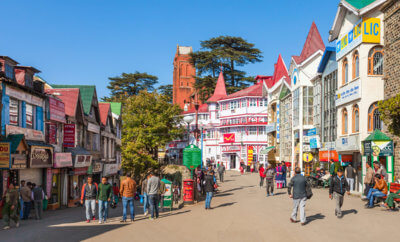Travel
7 Himalayan Treks to Challenge the Adventurer in You

Chadar trek
Wikimedia Commons
From Gaumukh Tapovan in Uttarakhand to Goechala in Sikkim, the Himalayas in India nestle stunning treks that will leave you gasping for breath, and exclaiming with joy.
As autumn sets in, so does the trekking season for most destinations in the Himalayas. While India offers various options all through the year to travel geeks who venture out on foot, October-November is the most popular time of year for trekking activities, perhaps because the season allows easier access to the base camps.
If you are planning to embark upon an exciting trek in the lofty mountain ranges in the north, we have a list right here. Do remember that these are high-altitude treks for which sufficient precautions must be taken beforehand. So read up on mountain sickness, carry medicines for altitude, get in shape to brace through the thin air… Well, that’s about it. Before all this, however, you have to decide on a trek, and that’s why, read on:
Goechala

Goechala trek
This is a trek where you get close to the South Face of the third highest mountain in the world — Kangchenjunga. It has already taken over popular imagination as an alternative to trekking among the big mountains of Nepal.
The trail, which begins from the quaint town of Yuksom in Sikkim, starts under a rhododendron cover, moves to exposed meadow and alpine lake, and then goes higher into glacial moraine as you get closer to the Pass and into raw mountain environment. As it turns out, Kangchenjunga is not the only mountain you see. You see a whole host of mountains from the range and the ones that stand out prominently are My Pandim, Kabru North and South. Pandim is a mountain you will see to the last detail — from its glaciers on the top to its foot.
April-May is great for rhododendron bloom while the Oct-Nov season offers crisp clear skies with picture-postcard mountain views.
Base camp: Yuksom, Sikkim
Altitude: 16,000 ft
Duration: 10-11 days
Difficulty: Moderate-Difficult
Season: April- early May, Oct-Nov
Kuari Pass
Running through the Nanda Devi Biosphere, this is one of the few “easy” treks with rewarding mountain views. Nanda Devi is seen in a grandiose fashion right from the beginning of the trek at the ski resort of Auli. As you enter the meadows of Gorson Bugyal, an amphitheater of mountains greets you from all sides: Ghoda and Hathi Parvath, Nanda Devi, Dunagiri, Neelkanth, Chaukhambha.
Further into the trek, you will see Trishul and Nanda Ghunti on the other side. From the meadows, you get into dense oak forests of Chitrakantha and set out for the Pass the next day.
Base camp: Auli, Uttarakhand
Altitude: 13,000 ft
Duration: 6 days
Difficulty: Easy
Season: Accessible all season except during monsoon (July-early September) and peak winters (January-February)
Gaumukh-Tapovan
The trek, which is also a pilgrimage, takes you close to the source of the river Ganga — the glacier Gaumukh. Standing in front of the mouth of an enormous glacier and hear it calving is an experience that needs to be had. Further ahead from the glacier are the alpine meadows of Tapovan where you can see Mt Shivling from its base to the top. Mt Shivling is one of those perfectly shaped mountains that you would have drawn in your notebook as a child.
You also see Mt Meru, which is behind Shivling, after a small hike up a ridge. Mt Meru recently came into annals of mountaineering history when three mountaineers — Conrad Anker, Renan Ozturk, and Jimmy Chin — conquered Shark’s Fin, the most difficult route to the top of the “Anti-Everest”.
You would need an extremely good local guide for this route, specifically to negotiate the Gaumukh Glacier and for the steep climb to the Tapovan meadows.
Base camp: Gangotri, Uttarakhand
Altitude: 14,000 ft
Duration: 8 days
Difficulty: Moderate
Season: April-May, Sep-Oct
Rupin Pass

Rupin Pass trek
This shepherd’s trail is popular among the Indian trekking community for the rapid scenery changes it gives each day. From hanging villages that reflect Kinnauri architecture (a mix of Hindu and Buddhist influences) and dense forests to lush bowl-shaped valley made by a glacier eons ago, snow bridges and a thrilling climb up a waterfall and over the narrow gully of a pass, the trek does not let a dull moment seep into the itinerary. ‘
The Pass, at its 70-degree angle, looks extremely intimidating but can be done with help of guides who can cut steps for you up the gully. The gully is so narrow that your sound echoes.
The May and June season is lovely for the expanse of snowfields you experience above the Rupin waterfall. The September-October season is greener, lusher, and lets you enjoy the sight of 7-8 tiny waterfalls beside the main Rupin waterfall. This is a crossover trek that moves from Uttarakhand to the region of Kinnaur in Himachal.
Base camp: Dhaula, Uttarakhand (Trek moves into Himachal Pradesh after Day 4)
Duration: 8-9 days
Altitude: 15,350 ft
Difficulty: Moderate-Difficult
Season: May-June, Sep-Oct
Pin Parvati
Another shepherd route, this trail was formally opened by the British in 1884 to the remote Spiti Valley. This trek is full of heart-in-the-mouth sections from the beginning to the end. It begins innocently from the dense forest of Kheerganga, before moving to the rock formations of Patthar Ghatti.
The rocks are above the roaring Parvati river and sure-footing on these sections is a must. The trail goes into the meadows of Odi Thach, then to the marshes of Mantalai and climbs higher up close to the Pass. The Pass, has a glacier has a lot of hidden crevasses, and the company of a good guide is essential here. The trek then moves into the barren Spiti valley, the land of Gods, as Rudyard Kipling puts it, and the trail is loose-soiled, and scree-ridden. The trek ends at the first village you see in these remote lands — Mudh.
This is a difficult trek and once you are on this trail, evacuation is close to impossible. There is only one route in and out. It needs sufficient preparation, and high altitude trek experience is essential.
Base camp: Barshaini, Himachal Pradesh
Duration: 11-12 days
Altitude: 17,457 ft
Difficulty: Extremely difficult
Season: July-September
Alpine Lakes of Aru/Tarsar Marsar

Tarsar Marsar
The grasslands of Kashmir are very European in their stature. Being a latitude more northern than the rest of the country, the geography of Kashmir behaves differently. On the trek, you will find that the title “Paradise on Earth”, given by Mughal emperor Jahangir, is justified.
The route, beginning from the hamlet of Aru that is surrounded by pine trees, involves a trek on the grasslands beside the Lidder river. If you follow the river, you can see Mount Kolahoi, known as India’s Matterhorn.
Aru is a region endowed with about 20 alpine lakes, including Tarsar, Sundersar, Tabakhsar, Marsar and Yamsar, all of which are uniquely shaped. Marsar, called the lake of death, is hidden inside a mountain crater. You have to take the trek early in the morning to see the lake before a cloud cover rushes in to hover over it. Only a few treks give you the opportunity to camp beside alpine lakes — and this is one.
Base camp: Aru, Kashmir
Duration: 7-8 days
Altitude: 13201 ft
Difficulty: Easy
Season: July-September
Chadar Trek
This is a unique trek to do and because of climate change, experts say it won’t be around for long. The Zanskari people of Ladakh are cut off from the main Ladakh region by snow for more than six months a year. Their only access to the outside world is a 14-day trek (most trek companies shorten it to a 7-day trek, and you return from a midway point) from Padum across the frozen sheet of ice on the Zanskar river.
Chadar, which means blanket, demands that you shuffle across it like a penguin. No day on Chadar is the same. Sometimes the ice is thin, sometimes the ice is thick, sometimes the ice melts so you have to climb on the gorge’s rock faces to go across the section. All in all, it is difficult to find a trek that can give you the experience Chadar does.
While the trek itself is moderate, the conditions on Chadar are difficult. You need to be prepared to face temperatures of -20 degrees Celsius and lower, as it is peak winter time in a cold desert.
Base camp: Leh, Ladakh
Duration: 7-8 days
Altitude: 11400 ft
Difficulty: Moderate
Season: January-February



